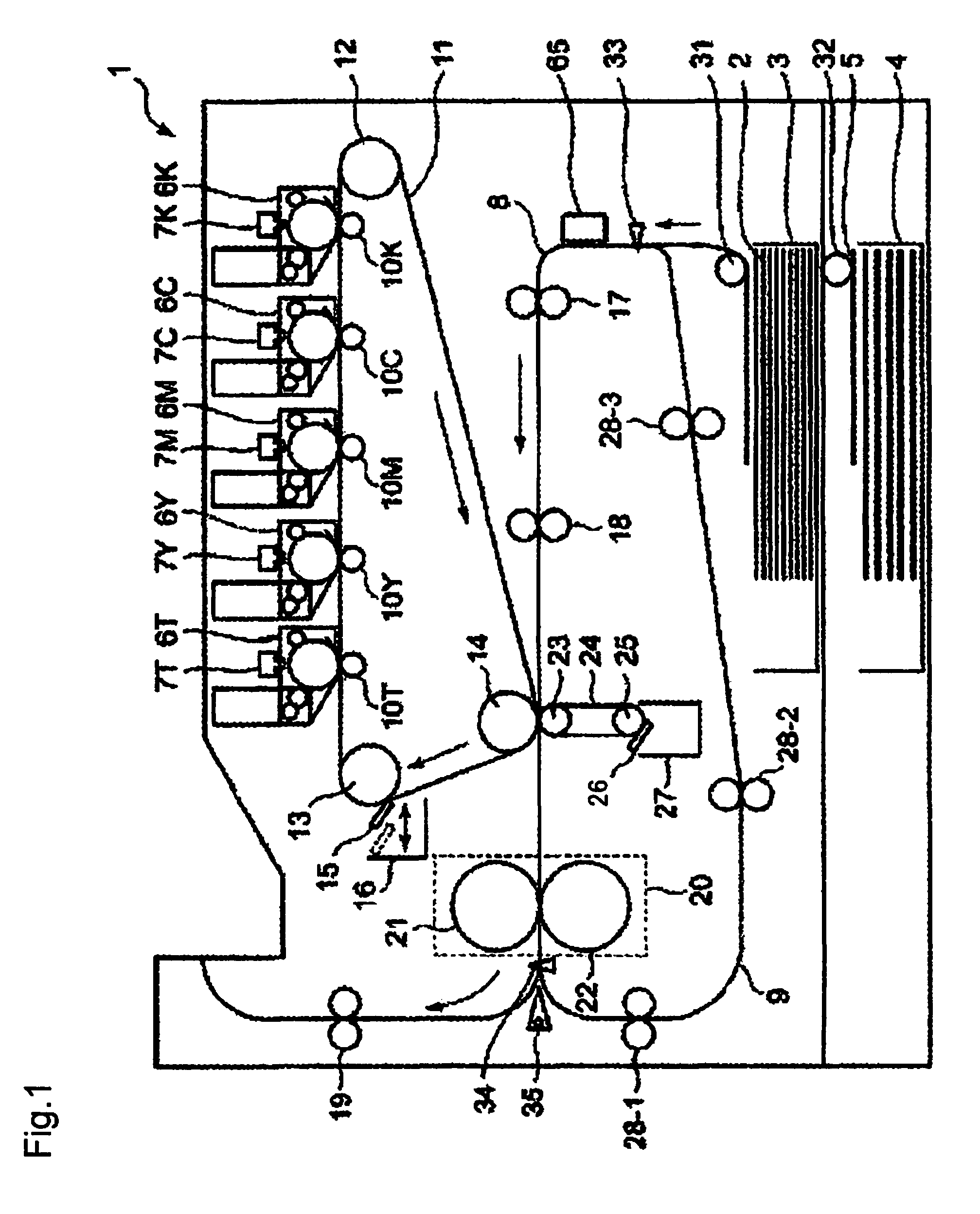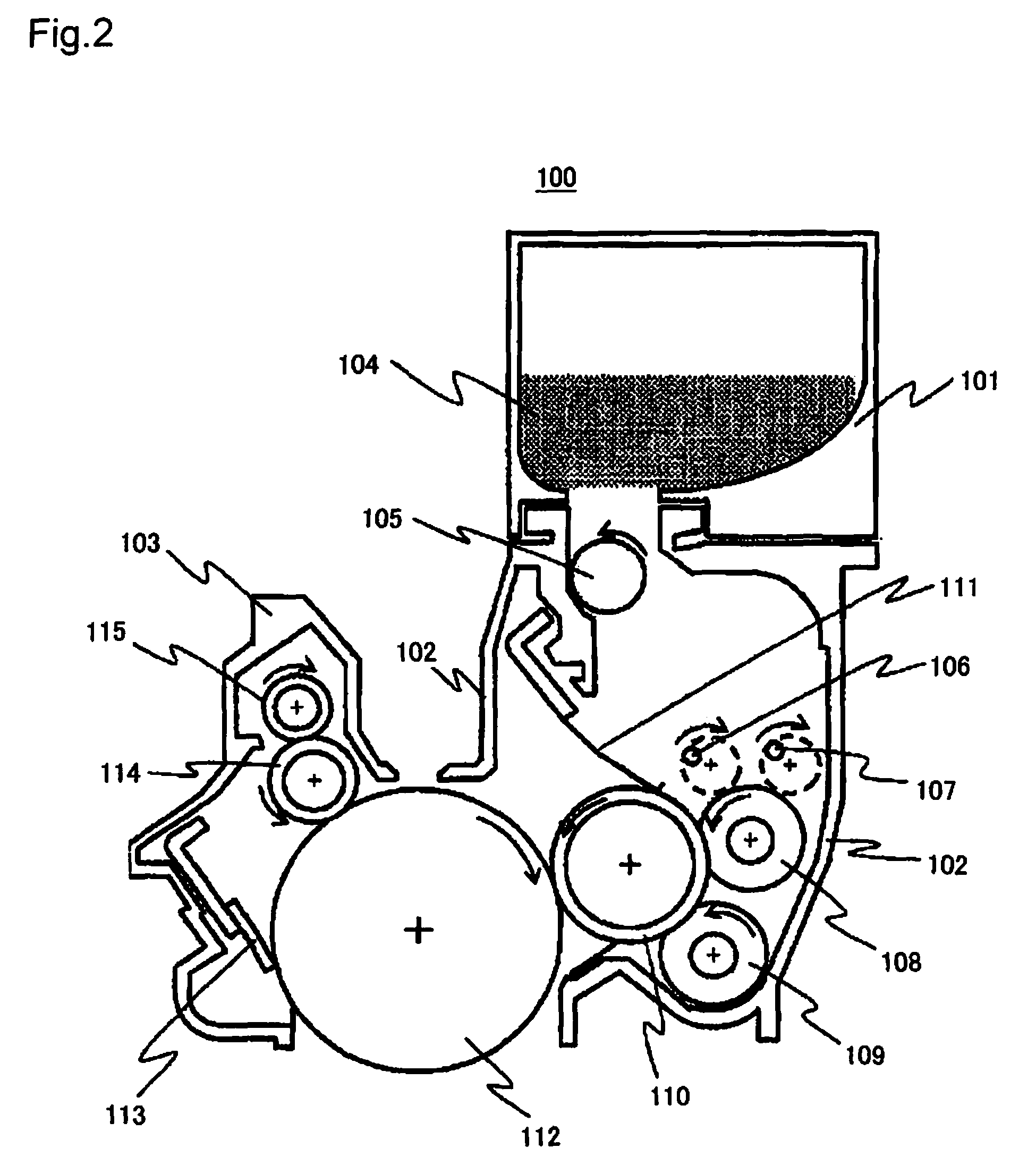Transparent developer, developer housing, development device, and image formation apparatus
a technology of developer housing and developer housing, which is applied in the direction of electrographic process equipment, electrographic process equipment, instruments, etc., can solve the problems of spot gloss reduction, color toner layer thickness reduction, and color toner layer laminated on the intermediate transfer belt. reduce the amount of transparent developer, and ensure the gloss of the image area containing transparent developer
- Summary
- Abstract
- Description
- Claims
- Application Information
AI Technical Summary
Benefits of technology
Problems solved by technology
Method used
Image
Examples
example 1
(a) Aqueous-Phase Preparation Step
[0104]First, to obtain an aqueous medium containing a dispersed inorganic dispersant, 650 parts by weight of an industrial trisodium phosphate dodecahydrate is mixed with 19540 parts by weight of pure water and dissolved at a liquid temperature of 60° C. Then, dilute nitric acid for pH adjustment is added to the mixture. Into the resulting mixture, a calcium chloride aqueous solution containing 320 parts by weight of an industrial calcium chloride anhydride dissolved in 2560 parts by weight of pure water is introduced, and stirred with a Neo-Mixer (produced by PRIMIX Corporation) at a high speed of 4300 rpm / min for 34 minutes while keeping the liquid temperature at 60° C., thereby preparing an aqueous phase containing a suspension stabilizer (dispersant).
(b) Oil-Phase Preparation Step
[0105]Next, a method of preparing an oil phase containing a polyester resin as a binder resin is described.
[0106]While stirring 3120 parts by weight of ethyl acetate as...
example 2
[0110]In Example 2, the binder resin used in the oil-phase preparation step (b) is a polyester resin having a glass transition point (Tg) of 63.1° C., a melt temperature (T1 / 2) of 109.6° C., and a weight-average molecular weight of 12000 instead of the polyester resin in Example 1. The other conditions are the same as in Example 1. The toner production step is also the same as in Example 1. This produces a toner having a glass transition point (Tg) of 66.0° C. and a melt temperature (T1 / 2) of 97.0° C.
example 3
[0111]In Example 3, the binder resin used in the oil-phase preparation step (b) is a polyester resin having a glass transition point (Tg) of 61.4° C., a melt temperature (T1 / 2) of 106.0° C., and a weight-average molecular weight of 10000 instead of the polyester resin in Example 1. The other conditions are the same as in Example 1. The toner production step is also the same as in Example 1. This produces a toner having a glass transition point (Tg) of 63.0° C. and a melt temperature (T1 / 2) of 94.3° C.
PUM
| Property | Measurement | Unit |
|---|---|---|
| melt temperature | aaaaa | aaaaa |
| glass transition point | aaaaa | aaaaa |
| Tg | aaaaa | aaaaa |
Abstract
Description
Claims
Application Information
 Login to View More
Login to View More - R&D
- Intellectual Property
- Life Sciences
- Materials
- Tech Scout
- Unparalleled Data Quality
- Higher Quality Content
- 60% Fewer Hallucinations
Browse by: Latest US Patents, China's latest patents, Technical Efficacy Thesaurus, Application Domain, Technology Topic, Popular Technical Reports.
© 2025 PatSnap. All rights reserved.Legal|Privacy policy|Modern Slavery Act Transparency Statement|Sitemap|About US| Contact US: help@patsnap.com



